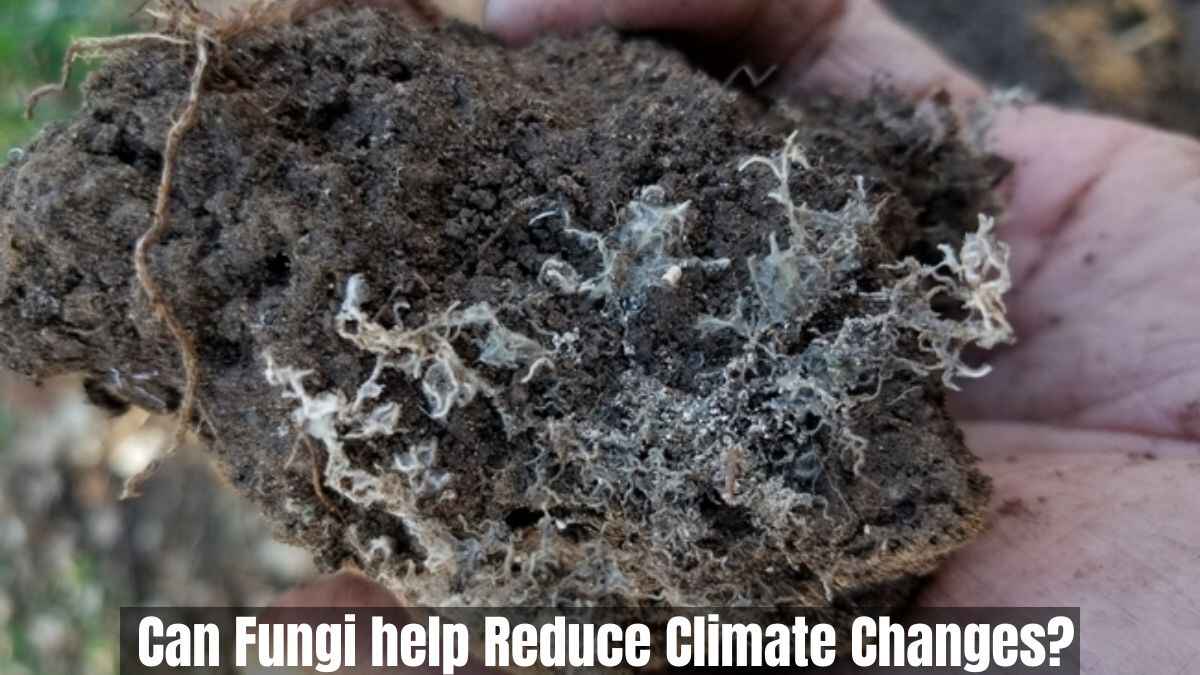Fungi, with their remarkable abilities, present a possible solution to address the pressing problem of climate change. These organisms play a crucial role in the environment and offer various benefits to mitigate climate change. A key contribution of fungi is their ability to sequester carbon dioxide, thereby reducing greenhouse gas levels in the atmosphere. Recent research by the University of Sheffield revealed the surprising finding that fungi could be responsible for absorbing approximately 36% of global fossil fuel emissions.
Beneath the Earth’s surface lies an extensive network of fungi that store more than 13 gigatonnes of carbon worldwide. This storage capacity is equivalent to approximately 36% of annual global fossil fuel emissions. Previously, the true extent of carbon storage by mycorrhizal fungi, which form symbiotic relationships with almost all land plants, was not fully understood. These fungi transport carbon, which plants convert into sugars and fats, into the soil. The discovery of its important role in carbon storage emphasizes its potential to address climate change and achieve net-zero emissions. Scientists are now exploring ways to improve the carbon storage capacity of the soil beneath our feet.

Mycorrhizal fungi have been vital in supporting terrestrial life for at least 450 million years. They form vast underground networks that extend even beneath roads, gardens and buildings on every continent. A team of international scientists, including experts from the University of Sheffield’s School of Biosciences, conducted a meta-analysis of numerous studies on plant-soil processes. Their research, published in Current Biology, revealed that an estimated 13.12 gigatonnes of carbon dioxide are transferred annually from plants to fungi. This process transforms soil into a huge carbon reserve, making it the most effective carbon capture and storage unit in the world.
The amount of carbon stored by mushrooms accounts for about 36% of annual global fossil fuel emissions, surpassing China’s annual emissions. Consequently, researchers advocate for fungi to be incorporated into conservation and biodiversity policies due to their critical role in reducing carbon emissions. If current trends persist, the United Nations warns that 90% of soils could be degraded by 2050, which would have catastrophic consequences for climate change mitigation, rising temperatures and the productivity of crops and plants.

Professor Katie Field, co-author of the study and expert in plant-soil processes at the University of Sheffield, highlights the importance of mycorrhizal fungi. She emphasizes that these fungi are often overlooked in carbon models, conservation efforts, and ecological restoration.
She explains, “Mycorrhizal fungi represent a blind spot in carbon modeling, conservation and restoration: the numbers we have discovered are staggering, and when we think about climate solutions we should also think about what we can take advantage of what already exists. .“
Researchers are now delving into the longevity of carbon storage by fungi in soil and further exploring the multifaceted role that fungi play in Earth’s ecosystems.
Dr Heidi Hawkins, lead author of the study from the University of Cape Town, points out that while forests have received considerable attention as a natural means of mitigating climate change, little attention has been paid to the fate of the considerable amounts of carbon dioxide. of carbon that move from the atmosphere to mycorrhizal fungi through photosynthesis.
Dr. Hawkins adds: “An important gap in our knowledge is the permanence of carbon within mycorrhizal structures. What we do know is that it is a flow, and that a part is retained in the mycorrhizal structures while the fungus lives, and even after its death. Some will be broken down into small carbon molecules and from there attached to soil particles or even reused by plants. And certainly some carbon will be lost as carbon dioxide gas during respiration by other microbes or by the fungus itself.”
Professor Toby Kiers, lead author from Vrije University Amsterdam and co-founder of the Society for the Protection of Underground Networks, highlights the global effort to understand the role of fungi in Earth’s ecosystems.
“The paper is part of a global push to understand the role that fungi play in Earth’s ecosystems. We know that mycorrhizal fungi are vitally important ecosystem engineers, but they are invisible to most people. Mycorrhizal fungi are at the base of the food webs that support much of life on Earth, but we are just beginning to understand how they really work. There is still a lot to learn.”
Ongoing research, led by the University of Sheffield’s School of Biosciences, is now investigating the specific role of mycorrhizal fungi in soil carbon and nutrient cycles. By simulating future climates in specialized outdoor field experiments, this NERC-funded study aims to improve our understanding of the critical contributions of soil fungi, along with other microbes, to underground carbon transfer and how These processes will be affected by future climate change. .
Categories: Optical Illusion
Source: ptivs2.edu.vn
